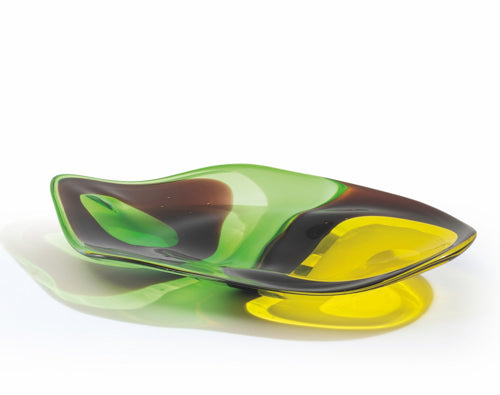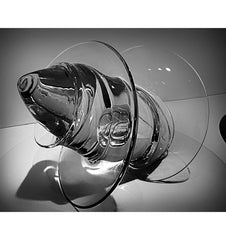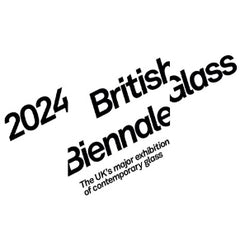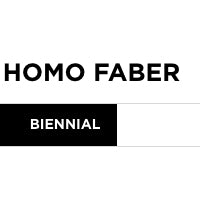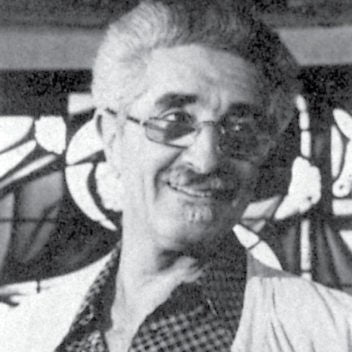
Born in Murano in 1915, he studied at the Carmini State Institute of Art in Venice with Guido Balsamo Stella .
In 1939 he graduated in graphic arts, design and artistic stained glass.
Together with his brother he opened a boutique in 1947 specialised in the decoration of blown glass and in artistic stained glass.
After having left the laboratory in 1955, he set up on his own.
From 1951 to 1972 he was director and instructor at the Abate Zanetti School . Between 1955 and 1960 he was a freelance for A.V.E.M. , for I.V.R. Mazzega and for the Domus Vetri D'Arte firm.
One of the few artists of this century who has managed to balance in his stained glass windows the rigorous search for the design aspect and the patient and creative work in the various phases of its construction is the Murano native Anzolo Fuga (Murano 1914 – 1998).
Born into a family of artists for many generations, even though his father Emilio dabbled in erudite compilations about famous Murano-born figures, producing in 1953 a passionate Guide to the Island of Murano, he was first prompted to deal with the art of stained glass when, as a boy, he observed some examples of Jugendstil stained glass produced by the Giacomo Cappellin firm for the setup of a shop of the same. Among these stained glass windows is the Fruit Basket, now stored in the deposits of the Murano Glass Museum.
Following the bankruptcy of the Cappellin firm, Fuga's first concrete experiments in the field of stained glass were conducted, as he himself often declared to the students of the Scuola d’Arte Abate Vincenzo Zanetti, using for this purpose some thin and beautifully transparent colored glass sheets that had been set aside in the warehouses of this company. These were mostly simple and stylized subjects in which the graphic and design aspect played a significant role. Along these lines of research and cultural trends, his formative meeting took place at the Venetian Academy with the Turin-born graphic designer and illustrator Guido Balsamo Stella.
The latter, who had trained abroad, at the academies in Munich and Stockholm, taught Fuga to prefer in his drawings the more sober dictates of the German Expressionist current, suggesting the use of the engraving tool and grinder to carve small and swift silhouettes on the transparent surfaces of blown glass. These so-called "chemical glasses," engraved with the collaboration of Franz Pelzel, were successfully exhibited by Balsamo Stella to public and critical acclaim at the Monza Triennial in 1930.
Balsamo Stella's creative work thus constituted the first artistic model. Later, the Muranese artist would also inherit from his master the generous and tireless inclination for teaching. Indeed, after having renewed the Sculpture School of Ortisei and Selva di Valgardena, Balsamo Stella went on to teach at the “Pietro Selvatico” Industrial Art School in Padua and then at the Superior Institute of Decorative Arts in Monza, finally concluding his teaching career in Venice as a teacher of book decoration at the State Art Institute (1936-41).
Anzolo Fuga, on the other hand, devoted much of his creative energy to the students of the School of Drawing for Master Glassmakers, an institution founded by Abbot Vincenzo Zanetti at the Civic Glass Museum of Murano back in 1862. The primary task of the Muranese institute was to provide future masters with solid technical and artistic foundations in the various sectors of glass art. I am convinced that the aspect of verbal and visual communication of one's artistic message, together with the didactic workshop experience in the use of different artistic techniques, were complementary aspects and both central to the artistic practice of our Muranese glass artist.
The production of Anzolo Fuga's stained glass windows is very extensive and includes subjects of religious character and profane themes, but the artist also engaged in naturalistic subjects like still lifes and landscapes, and in copying from ancient stained glass windows. The artist's inspiration is very broad as it assimilates inventive cues from much of the production of ancient and modern figurative and storied stained glass at an international level. Among the masters whom he most wanted to consider as stylistic examples for the design of his stained glass windows, I would mention Pablo Picasso, Virgilio Guidi, and Amedeo Modigliani, but there are endless cues from the work of other artists that can be read in his works, not without our artist contributing with his personal inventiveness to transform and make the model his own.
In the stained glass windows with a sacred subject, there are cues taken from the English Pre-Raphaelite Spiritualism of William Morris and Burne-Jones, from Franco-Flemish Symbolism, Maurice Denis for the stained glass windows of the cathedrals of Freiburg and Geneva (1917), and Georges Desvallières, the latter the creator in 1927 of the stained glass windows of the Douaumont Ossuary near Verdun.
As for the technical aspects, he refined the traditional resources of Murano glass without ignoring certain experiments characteristic of the Nancy School artists.
Later, our artist wanted to inspire his religious stained glass windows in the production of French artists such as: Henri Matisse, Fernand Léger, Georges Braque, Henry Rouault, Marc Chagall, Jacques Villon, brother of Marcel Duchamp, Marcel Gromaire, and Alfred Manessier. Rather than the abstract search for “modern” environmental atmospheres, prefigured by Matisse in the white stained glass windows outlined in black for the Dominican Rosary Chapel in Vence (1948-50), the interest was directed towards identifying the correspondence between the contents of modern spirituality and the presentation of new chromatic-luminous effects.
The stained glass windows with episodes of the Passion of Christ by Fernand Léger in the church of Audincourt (1951) constitute a masterpiece that is hardly equaled in the expressive research mentioned, the results of which were long pondered by our Muranese master. Dating back to 1953-54 are both Léger's stained glass windows for the Swiss church of Courfaivre and those by Georges Braque for the small church of Varengeville-sur-Mer, a village on the English Channel chosen by the artist as his summer residence. Moreover, the dark realism presented in the work of Georges Rouault is not entirely foreign to Fuga's art: that dark cutting out of shapes with thick and irregular black outlines, a technique that alone declares that the French artist's formation occurred as a pupil of a stained glass painter and then, around 1880, as a restorer of ancient medieval stained glass windows.
Anzolo Fuga represents a different approach to stained glass compared to Marc Chagall. The Muranese master, with a few graphic interventions and with deep respect for the material and characteristics of the glass, maintains the transparency and color of the sheet. The Russian artist, on the contrary, uses the sheets as a mere support for his intervention and achieves the desired pictorial effects with extensive use of color and oxide stains. He too, like our artist, engaged in storied stained glass windows intended for the Catholic religion (Metz Cathedral, 1959-60), but also in other subjects requested by the Jewish community of Jerusalem (Hadassah Hospital Synagogue in Ein-Karem, 1961).
Our Muranese master's production has known, albeit less frequently, other artistic genres such as the precious transposition on glass of Byzantine and Venetian-Cretan icons, the design of some very simple and stylized chandeliers, and about fifteen “ironic” series of glasses (thin iridescent multicolored glass, animated by figures and stylized subjects engraved and decorated in relief on the surface) in which the experience matured as a young man with Guido Balsamo Stella re-emerges.

